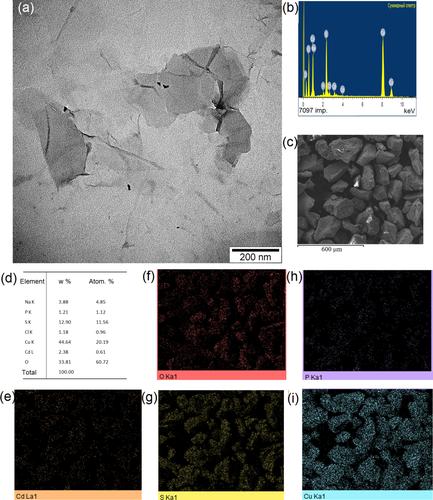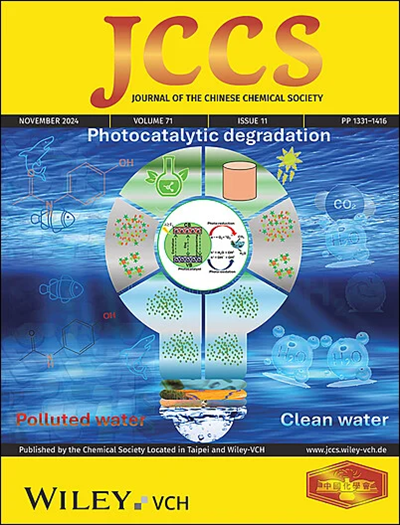Synthesis and characterization of CuxCd1-xS nanocrystals into functionalized nitrile butadiene rubber matrix
Abstract
Introduction
Polymetallic sulfides and heterostructures like CdIn2S4, CdZnS2, CuxS-NiySz, Cu2CoSnS4, CoNi2S4, Zn0.76Co0.24S have been fabricated with various shapes and forms for new applications. Ternary copper cadmium sulfides (CuCdS2) are a p-type semiconductor with a direct band gap of about 2.4 eV forms very good nanocrystals like copper sulfide could be potentially applied to optical and electronic applications. Knowing that the SILAR synthesis, optical, paramagnetic, dielectric properties, and annealing of copper cadmium sulfides have not been sufficiently investigated, they are extensively analyzed and studied in the present work.
Objectives
CuxCd1−xS (x = 0, 0.5, and 1) nanoparticles have been synthesized on the base of functionalized nitrile butadiene rubber by SILAR method and characterized using scanning electron microscopy, x-ray diffractometer, UV–visible spectroscopy, Fourier-transform infrared spectroscopy, electron paramagnetic resonance spectroscopy, and Raman spectroscopy. Effects of cycles, reaction time, and precursor concentration on the particle size, crystal growth and structure, bandgap energy, dielectric and paramagnetic properties, elemental composition, and morphology were investigated.
Methods
The synthesis of CuxCd1−xS nanocrystals was carried out into the obtained functional polymer matrix by SİLAR method. The functional polymer (FNBR) is a dark brown powder which contains -PO(OH)2 and -OPO(OH)2 functional groups and does not dissolve in organic and inorganic solvents, can be used as a very good stabilizer of nanostructures. The synthesis of CuxCd1−xS/FNBR nanocompsite was carried out in 3, 5, and 15 cycles.
Results and discussion
In the process of ternary sulfide formation, the nucleation rate of CdS was high at the beginning of the reaction, while the growth rate and stability of CuS were high in the later course of the reaction. The average crystallite size of the nancrystallites has been increased from 1.13 nm to 7.39 nm by the increasing of the number of cycles from 5 to 15, respectively. It is explained by the inclusion of copper in the composition and getting more stable material. Copper cadmium sulfide nanostructures demonstrate wide band gap energy (~3.7 eV) in this work which is explained by the formation of nanosized particles in a limited volume of FNBR matrix.
Conclusions
The synthesis of CuxCd1-xS nanocrystals was carried out into the obtained functional polymer matrix by SİLAR method. Strong diffraction peaks corresponding to cubic CdS are found with low SILAR cycles. SEM images of CuxCd1−xS/FNBR nanocomposite show that the atomic percentage of Cu and Cd into the ternary sulfide is 20.19% and 0.61%, respectively. It is explained by the inclusion of copper in the composition and getting more stable material with low solubility products (Ksp) which is in good agreement with XRD results. The calculated band gaps are higher than that of bulk CdS, CuS, and CuCdS2. Larger band gap is usually reported for defects or structural disorders, which is in good agreement with XRD and Raman results.



 求助内容:
求助内容: 应助结果提醒方式:
应助结果提醒方式:


